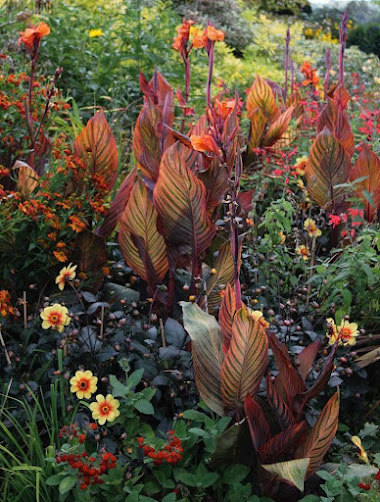Perennials & Annuals
PERENNIALS &
ANNUALS
___
By Shamir Johnson
Perennials vs Annuals:
Annuals and perennials have different characteristics that make them ideal for different gardeners and different types of gardens.
Life Cycle
The main difference between annuals and perennials is their life cycle. Annuals complete their life cycle in one season, while perennials come back year after year.
Blooming:
Blooming: Annuals bloom all season long, while perennials have a shorter blooming period, usually lasting for a few weeks to a few months.
Maintenance:
Annuals are generally easy to care for, but they do require regular watering and fertilizing. Perennials require less maintenance, but may need to be divided or pruned occasionally.
Advantages and Disadvantages of Annuals:
Advantages:
Long Life Cycle:
Perennials come back year after year, which means you don't have to replant them every year.
Low Maintenance:
Perennials require less maintenance than annuals, and many are drought tolerant.
Cost Effective:
While perennials may be more expensive to purchase initially, they are a cost-effective option in the long run since they don't need to be replanted every year.
Disadvantages:
Shorter Bloom Period:
Perennials have a shorter blooming period than annuals, usually lasting for a few weeks to a few months.
Limited Colors and Sizes:
Perennials come in fewer colors and sizes than annuals, which can limit their versatility in the garden.
Pruning and Dividing:
Perennials may need to be pruned or divided occasionally to keep them looking their best.
Types of Annuals:
There are many different types of annuals, each with its own unique characteristics. Here are some common types of annuals:
Bedding Plants: These are small, compact plants that are used to fill in garden beds or containers. Examples of bedding plants include petunias, marigolds, and impatiens.
Cut Flowers: These are annuals that are grown specifically
for their beautiful blooms, which are often used in floral arrangements.
Examples of cut flowers include zinnias, snapdragons, and cosmos.
Edible Annuals: These are annuals that are grown for food.
Examples of edible annuals include tomatoes, peppers, and lettuce.
Types of Perennials:
There are many different types of perennials, each with its own unique characteristics. Here are some common types of perennials:
Herbaceous Perennials: These perennials have soft stems that die back in the winter, but their roots survive and grow new foliage in the spring. Examples of herbaceous perennials include daylilies, hostas, and peonies.
Bulbous Perennials: These perennials grow from bulbs that are planted in the fall and bloom in the spring. Examples of bulbous perennials include daffodils, tulips, and crocuses
Both annuals and perennials have their advantages and disadvantages. Annuals are a great choice for gardeners who want continuous color and versatility, while perennials are ideal for those who want a low-maintenance garden that comes back year after year. By considering your garden's needs and your gardening preferences, you can choose the best plants for your garden and enjoy the beauty and color they provide all season long.








Comments
Post a Comment